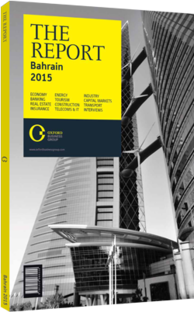Le Luong Minh, Secretary-General, Association of South-East Asian Nations (ASEAN): Interview

Interview: Le Luong Minh
How could ASEAN economies make better use of the Gulf as a bridge between Asia and Africa?
LE LUONG MINH: Given the two regions’ respective comparative advantages and geographic proximity, economic relations between the GCC and Africa are growing. A study by the Gulf Research Centre in 2010 discussed on how the two regions have become mutually reinforcing, in terms of bilateral trade investment: on the one hand, the GCC supplies Africa with energy and heavy manufacturing, while infusing the necessary investments to fund important infrastructure projects; Africa, on the other hand, has become the GCC’s important source of minerals, metals and agricultural products. Similarly, given the strategic location of the GCC between Asia and Africa, the Gulf could indeed be a natural bridge between the two, however, ASEAN economies have not been utilising this advantage to its fullest capacity. ASEAN trade with Africa is relatively small. From 2009 to 2013, Africa’s share of ASEAN’s total trade had not gone beyond 2%, with annual growth rates fluctuating. Trade balances have always been in favour of ASEAN, and this is because ASEAN exports to Africa have predominantly been auto parts and components, telecommunication equipment and rice.
The EU remains Africa’s major trading partner, although Africa does some trade with Asia. The East Asia region is progressively deepening and broadening economic integration, which results in changes to the production patterns created by the supply chains that have been set up in the ASEAN region. This could open up a lot of opportunities for ASEAN-Africa trade, using the GCC as a conduit. ASEAN is also looking at further enhancing economic relations with the GCC, which could also be a catalyst for the expansion of ASEAN-Africa trade and investment relations.
What are the key factors affecting the proposed inter-regional free trade agreement (FTA)?
MINH: The possibility of an inter-regional FTA between ASEAN and the GCC is not far-fetched. In fact, the GCC has been on ASEAN’s radar since 2010. The GCC has FTAs with India and Pakistan and is negotiating similar agreements with Australia, Japan, Korea, New Zealand and China – all FTA partners of ASEAN. However, there are many factors to consider before ASEAN and the GCC could enter into negotiations for a region-to-region FTA.
First and foremost is the fact that the GCC is a Customs union and ASEAN is not. This could bring protracted discussions on the level of ambition and the modalities for trade liberalisation, among others. Then there is the problem of resources. ASEAN is building an ASEAN Economic Community (AEC), negotiating what could be one of the largest FTAs in the world (the Regional Comprehensive Economic Partnership between ASEAN and its six FTA partners), and working on upgrading/enhancing existing FTAs. These obstacles should not however deter ASEAN and the GCC from an eventual region-to-region arrangement. A pragmatic approach needs to be taken, perhaps starting with confidence-building steps, such as trade and investment facilitation arrangements and promotion activities.
What integrational challenges face ASEAN in preparing for the AEC in 2015?
MINH: In the lead up to AEC 2015, it is important to complete the regional integration agenda as set out in the AEC Blueprint. While important gains have been evident, a key challenge is to make these gains visible to stakeholders and beneficiaries of the AEC. The engagement and participation of the private sector is important, and greater understanding of ASEAN and the AEC at the local, national, regional and international levels is crucial to dispelling fears and unrealistic expectations.
To achieve a well-connected ASEAN region, strengthening the framework for public-private partnerships (PPPs) for infrastructure development is also essential. Mobilising adequate resources to finance infrastructure projects may be challenging; however, with massive financing requirements, private capital is a crucial source of funding and ASEAN regards PPPs as a key.
You have reached the limit of premium articles you can view for free.
Choose from the options below to purchase print or digital editions of our Reports. You can also purchase a website subscription giving you unlimited access to all of our Reports online for 12 months.
If you have already purchased this Report or have a website subscription, please login to continue.

